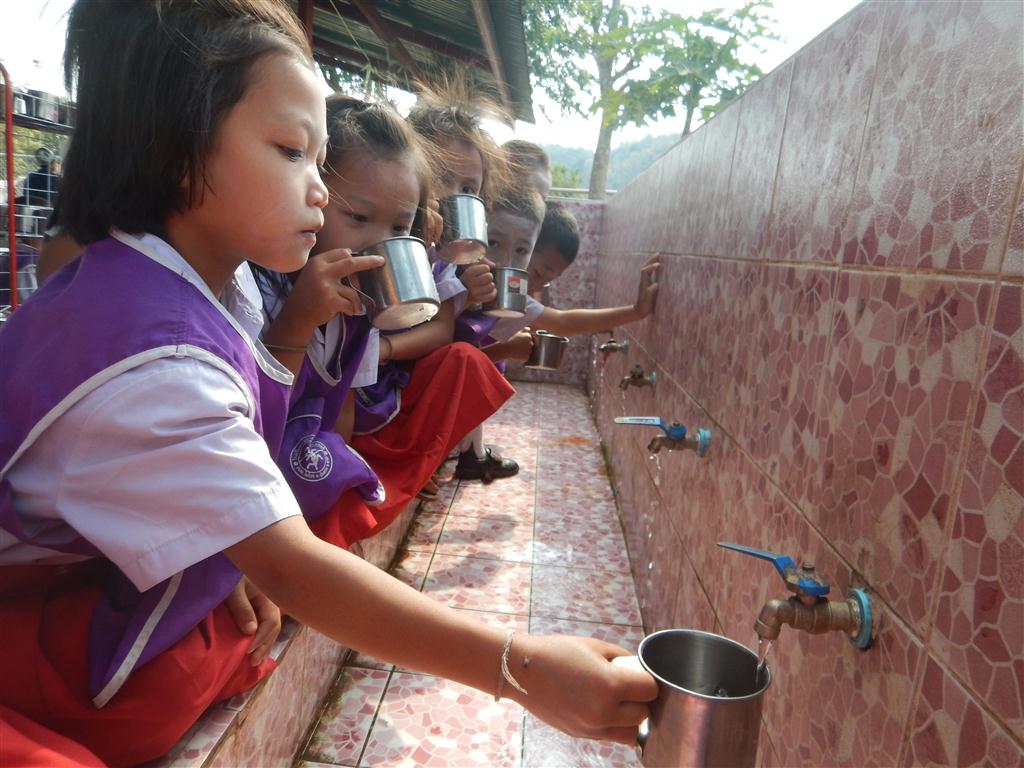Northern Region: Mae Sariang and Pang Mapha Districts in Mae Hong Son Province, On Koi District in Chiang Mai Province and Umphang District in Tak Province, Thailand
In collaboration with

August 2015 – 31 January 2016
We build water and toilet facilities to reduce the transmission of diseases due to the consumption of surface water.
Objectives
- To carry out the construction of latrines and water supply systems in 10 nursery schools.
Beneficiaries
529 direct
2,000 indirect
The children’s families.

On the ground
We managed to recover the water supply in Leyte, one of the poorest and most affected areas where 900 families live. The communities in the mountains of northern Thailand drink surface water with the consequent risk of contagion of diarrhoea that causes child malnutrition.
In the mountains of Northern Thailand, close to the border with Myanmar, there are many ethnic minorities living in tribal groups. These communities are isolated and difficult to access. Water is fetched directly from creeks and used unfiltered, with the associated risk of disease, especially diarrhoea. The main cause of water contamination is excretions, due to the lack of proper sanitary facilities. Many children in these communities are undernourished and extremely thin for their age, the result of the lack of latrines and access to drinking water.

In detail
The project in which the We Are Water Foundation is partnering with World Vision consists in the building of toilet blocks and drinking water supply systems in 10 nursery schools. In some areas, building work will have to take place after the end of the rainy season (May to October) because the rains make access to mountainous areas difficult. Some of the centres already have water systems, basins and/or latrines, so the building works will not be identical in all 10 nursery schools, but will consist of the following:
- 1 toilet block with 4 WCs and 1 basin
- 2 toilet blocks with 2 WCs and 1 basin
- 4 toilet blocks with 2 WCs (no basin, as one already exists)
- 3 water tanks
- 5 water purification systems (all different, as their volume will depend upon the size of the nursery school).
What does the project include in addition to the building of toilets and drinking water systems?
The project, located specifically in Umphang, Mae Sariang, Om Koi and Pang Mapha, also includes awareness-raising campaigns covering basic hygiene and sanitation measures and education on the subjects for both children and those caring for them. Training will also be provided to chosen members of the communities on the maintenance of the sanitary facilities and the water systems. Additionally, the programmes include activities to improve the nutrition and health of mothers and infants, and education activities.

